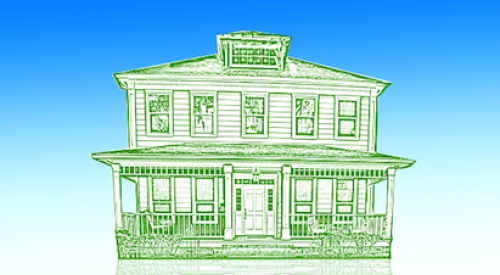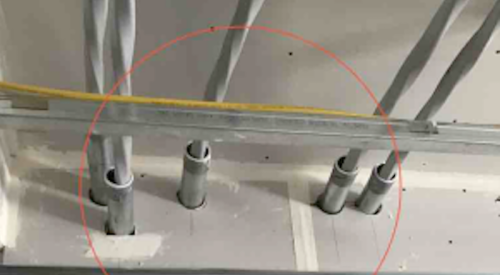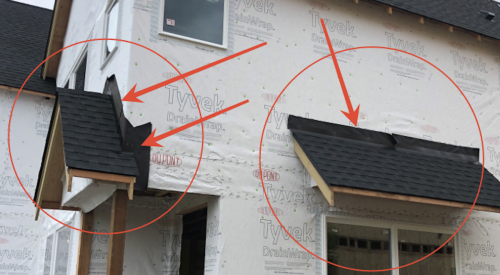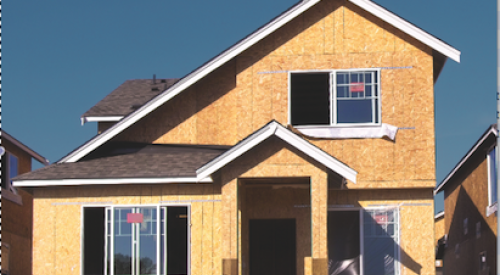 |
Home builders have learned much over the 15-year-plus evolution of construction defect litigation — primarily that it stems from mismatched expectations versus actual performance of residential properties.
While the specter of lawsuits has led to far higher construction quality standards in the residential sector, today's home buyers and consumers have more sophisticated product and service quality expectations. In striving to meet them and create satisfied buyers — and potential referrals — home builders must differentiate themselves by offering high-performance features and exceptional customer service. But one must ensure that what's promised to home buyers is ultimately delivered — or face the potential risk of litigation.
Traditional litigation-generating assemblies include flawed weatherproofing; framing and concrete foundations; fire-resistant and acoustical assemblies; and deferred maintenance of common-area amenities.
In today's higher performance buildings, this list expands to include HVAC system efficiency; adequacy of insulation and energy consumption; and chemical emissions of building products. By definition, these buildings are commonly known to be sustainable, "green" buildings and expected to be healthy to live in and healthy for the environment. These industry standards are not yet well-defined, and several trade associations, utilities and independent entities are jockeying for position to assume a leadership role.
How builders deal with these rapidly evolving products, technologies and standards will determine their long-term liability exposure.
High-performance buildings and the green trend
Peer review oversight of the design details and product selection process helps high-performance buildings comply with green principles. This serves in the all-important first step toward avoiding potential "green washing": substituting lower-quality or inferior products.
"We've learned that today's home buyers are more sophisticated than they were five or 10 years ago," says Greg Dillion, attorney and co-founding partner in Newmeyer & Dillion of Newport Beach, Calif. Dillion adds that buyers are paying more attention to marketing materials and remember everything they were told during the sales process "and sometimes a few things that they were not." Corporate green washing has received a fair amount of press recently.
Developers should be very careful both pre- and post-construction not to overstate how green a project is or imply utility savings or health benefits that cannot be proven.
Proper preparation and oversight of execution
Clearly, design and construction documents need linking with construction observations in real time to assure compliance is achieved. An important interim step encompasses trade scopes of work reviews because it is the trade contractors who carry the burden of implementing the design intent of the plans. McStain Neighborhoods in Louisville, Colo., has successfully implemented high-performance systems in its homes. Jeff Medanich, manager of building sciences, says McStain's First Time Quality program ensures all trade partners are trained and included in the McStain approach to home building.
"We don't just give directives on what we want; we explain why it is important and how it will add to the comfort, sustainability and efficiency of the homes they are building."
The next logical step is to ensure these proper specifications and scopes of work are executed. Observation items and specific risks for litigation will vary with the complexity of construction. Type I/II construction (high rise, concrete/steel condominium towers) and Type V, one-hour construction (wood-framed podium projects) will very likely encompass more intricate assemblies than a Type V, non-rated product. A comprehensive quality assurance program should encompass third-party inspection services throughout the entire construction process.
Should a home builder decide to incorporate green building principles in its homes, there may be additional high-performance products such as photovoltaics, more efficient water heaters, passive space heating, formaldehyde-free insulation, electric vehicle outlets for short distance errands, etc. These important green assemblies and products require inspections in the field to ensure proper installation and to achieve the promised long-term performance. This is especially important with systems that have not enjoyed the test of time.
As a company that has implemented many of these technologies, Medanich says McStain builds "research homes" allowing the company the opportunity to try new materials and techniques and evaluate them prior to using them in production homes. "These test homes coupled with third-party inspections are most impactful to ensure we are meeting our buyers' expectations," Medanich says.
One of the last stops in this construction quality journey involves commissioning/testing and maintenance of the improvements constructed. The process ties together design parameters, construction integrity and maintenance obligations of the end users.
Commissioning has long been standard in commercial building practices. Residential home builders will find similar benefits by ensuring correct assembly installation, operation and enhanced longevity of the structure. Performance testing of the HVAC systems, for example, will not only assure correct installation and function but also raise end-user confidence and acquaint them with maintenance requirements. Documenting this entire process is important. Similarly, maintenance manuals will ensure that your home buyers are equipped to maintain those assemblies properly.
The more knowledge builders can instill in their home buyers the greater chance of shaping their expectations.
Final walkthrough and homeowner orientations serve two purposes: to acquaint a new home buyer with the intricacies of the home and develop those all-important customer relations. Continuing these relationships with targeted communications throughout the first few years and backing those up with exceptional customer service can produce lifetime customers and referrals — and lessen of the sort of discontent that can lead to lawsuits.
Commit to higher standards now to reduce liability later
Recognizing the long-term benefits of demanding and delivering higher standards, a few select customer-centric home building companies have achieved high marks for satisfaction among their buyers relative to product quality and warranty service. These builders strive to "delight" their customers and recognize the necessity of maintaining these relations.
"We know this is a long-term relationship and we act in alignment with that, says Robin Lienhardt, director of HOA/DRE for Shea Homes in Brea, Calif. "Life after close of escrow must meet the buyers' expectations. We set those expectations every step of the way. If there is a 'miss' somewhere, we have the channels to know it and address it in a timely manner."
As progressive builders lead by example, the home building industry is striving to incorporate systematic organizational processes, continuous incremental improvements, and responsive customer service to meet and exceed customer expectations while limiting liability.
| Author Information |
| Don Neff is president and founder of La Jolla Pacific, a real-estate consultancy in development, construction, project management and forensics investigation-related services. He has written numerous articles on construction quality and risk management issues. |
Special Issue: Risk Management:
Overzealous Claims Lead to Liability Woes
Liability Insurance for Homebuilders
Your Construction Manager: First Line of Defense
How Homebuilders Can Deal with Difficult Customers
How Other Homebuilders Avoid Risk












